1
The Harmsworth Empire and the Raw Material ScareAs the Harmsworth publishing empire expanded in Great Britain in the 1890s, so did the fears of a European conflict and possible disruption of the raw material supply for those papers. Northcliffe foresaw the coming conflict and began to search overseas for an alternate supply of the resources needed to feed his newspapers. As owners of daily, weekly and monthly publications in the London area, they controlled some 30 tabloids, newspapers and magazines. Because of an increasing demand for newsprint, Alfred Charles Harmsworth sent out his resident engineer, William Scott, on a scouting mission to Newfoundland 1897. His job was to locate possible sites for the construction of a large pulp mill. His visit here would have gone unreported if not for the discovery of his diary in the old desk at the paper mill during clean-up in the 1960's Nothing is known of his report to Harmsworth or the current whereabouts of the diary, only that approximately six years later, in 1903, Mayson Beeton and Harold Harmsworth came to Newfoundland. This time a site for a pulp and paper mill was the definite objective. Beeton travelled the island, possibly reviewing the sites suggested by Scott, while Harmsworth travelled to Quebec to check out locations there. Alfred Harmsworth eventually settled on the Grand Falls on the Exploits River in Central Newfoundland as the location for his venture.
In 1907 they established the Anglo-Newfoundland Development Company at Grand Falls.
2
The Harmsworth Empire and the Raw Material Scare.1903
Grand Falls-Windsor, Newfoundland, Canada
 Credits:
Credits:Grand Falls-Windsor Heritage Society. A.N.D. Collection.
Grand Falls Windsor, A Place and its People, Published by: Grand Falls-Windsor Heritage Society Inc. 2005
3
Alfred Harmsworth: The New Robinson Crusoe and his New found land of Paper.February 1910
England
 Credits:
Credits:Cartoon appearing in "The Stationer", February 1910.
Artist Alec C Gould
4
The Exploits River SiteImmediately, negotiations with the Newfoundland Government of Sir Robert Bond began, and by the summer of 1904 Alfred Harmsworth and Mayson Beeton, with a Micmac Indian guide, travelled the Newfoundland railway to the Grand Falls telegraph relay station, where they disembarked and walked over the burnt and cut-over areas to the falls. Harmsworth himself referred to the majestic cascade of the falls as "white coal". According to Beeton it had all the features of a site they desired: a huge water source for the generation of electric power, which could be used to transport raw wood products to the mill site, sufficient stands of prime timber nearby, a deep water port for shipping just 18 miles downstream and the railway linking it to the rest of the colony only a short distance away. The decision was made to proceed. Six months later, on Thursday, Jan. 5, 1905 the newest addition to the Harmsworth family of companies became the Anglo-Newfoundland Development Company.
5
The Exploits River SiteCirca 1907
Grand Falls-Windsor, Newfoundland, Canada
 Credits:
Credits:Grand Falls-Windsor Heritage Society, A.N.D Collection
Grand Falls Windsor, A Place and its People, Published by: Grand Falls-Windsor Heritage Society Inc. 2005
6
Newfoundland and the Start of the Industrial RevolutionHiller, J.K. Politics of Development, 1897-1914
As premier of Newfoundland, Sir Robert Bond pursued two main objectives in terms of economic development. First, he wanted to encourage diversification in the fishing industry - the catching of new species, and the development of different ways of processing and packaging - and to find new markets for Newfoundland fish in the United States market. Second, he wanted to see forest industries flourish and, especially, to get the pulp and paper industry established on the island.
The terms of his government's agreement with the Anglo-Newfoundland Development Corporation [ANDCo], the subsidiary the British Harmsworth newspaper empire which planned to build a newsprint mill at Grand Falls, was attacked by the Opposition when unveiled in 1905. The desirability of the mill was not in question. The problem was the concessions involved, which many thought were far too generous. Bond's willingness to make concessions to ANDCo was contrasted with his opposition to the 1898 Reid deal for a railway across the island.
But Bond faced a dilemma. Either he showed generosity in terms of extensive timber leases, low rentals and a favourable tax regime, or the Harmsworths might well walk away and establish their mill on the mainland. Bond was the first, but by no means the last premier to face this kind of situation. And like many of his successors, he judged that a new industry and the jobs it brought was, in the end, the most important consideration.
Thus the Grand Falls deal was approved (with some modifications), and the Bond government went on to conclude another agreement with the British papermaker, A.E. Reed, to build a pulp mill at Bishop's Falls. Newfoundland now had a third staple industry to add to the fishery and mining - an industry which had increased its importance with the opening of the iron mines on Bell Island in the 1890s.
7
Newfoundland and the Start of the Industrial Revolution: Sir Robert BondEarly 1900s
Newfoundland, Canada
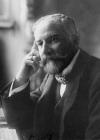 Credits:
Credits:Story/Text: Hiller, J.K. Politics of Development, 1897-1914 http://www.heritage.nf.ca/law/politics_development.html
Photograph date Circa 1923: Courtesy of the Centre for Newfoundland Studies Archives (Coll - 237), Memorial University of Newfoundland, St. John's, Newfoundland.
8
Mill BeginningsThe following information was included in an article written in 1908 and included in Grand Falls-Windsor: The Place and its People and was accompanied by a signed message from Lord Northcliffe:
Grand Falls, the property of the Harmsworth Co., of London, England, is Newfoundland's industrial centre. The construction of the enormous Pulp and Paper Mills, Dam, Penstock and Power House is now being rushed to completion, and is expected to be in operation in the autumn of 1909. The Mill is the most complete, perfect and one of the largest in the world, and will produce 300 tons of pulp and paper daily. These products are for the purpose of supplying paper for the Company's many publications which include London Times, Daily Mail and about forty other papers and magazines. The Dam across the River Exploits is over 800 feet in length.
The Penstock comprising two enormous steel tubes 15 feet in diameter and one half mile in length, conduct water to the Power House.
Private railway is under operation in Millertown, the logging centre, whilst another is being constructed in Botwoodville, the shipping point.
2000 men are now on the company's pay roll, half of whom are building the mills, whilst the others are cutting pulp wood at Red Indian Lake. The city of Grand Falls is laid out on modern lines, with a splendid electrical and water service.
The stores are well managed, the profits of which are devoted to the general welfare, such as upkeep of school, etc. The school is denominational. Mining also is carried on at Red Indian Lake.
On the occasion of the visit Lord and Lady Northcliffe to Grand Falls and Millertown, his Lordship expressed himself as highly pleased with the progress and asked that the following message be reproduced on these photographs in copy of his own handwriting.
Signed by Lord Northcliffe:
"Lady Northcliffe and I desire to express our delight with the progress of Grand Falls and Millertown and to wish all a very happy Xmas and New Year. Northcliffe Xmas 1908
9
Grand Falls-Windsor "The Place and It's People"2005
Grand Falls-Windsor, Newfoundland, Canada
 Credits:
Credits:Grand Falls Windsor Heritage Society
10
Visit of Lord and Lady Northcliffe.1908
Botwood, Newfoundland, Canada
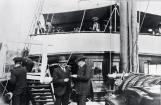 Credits:
Credits:Grand Falls Windsor Heritage Society A.N.D Collection
11
Royal WelcomeEarly 1900s
Grand Falls-Windsor, Newfoundland, Canada
 Credits:
Credits:Grand Falls Windsor, A Place and its People, Published by: Grand Falls-Windsor Heritage Society Inc. 2005
12
Visit of Lord and Lady Northcliffe1908
Botwood, Newfoundland, Canada
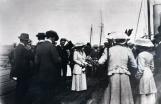 Credits:
Credits:Grand Falls Windsor Heritage Society A.N.D Collection
13
Gathering near the Exploits RiverEarly 1900s
Grand Falls-Windsor, Newfoundland, Canada
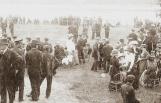 Credits:
Credits:Grand Falls Windsor, A Place and its People, Published by: Grand Falls-Windsor Heritage Society Inc. 2005
14
Mill Beginnings1908-09
Grand Falls-Windsor, Newfoundland, Canada
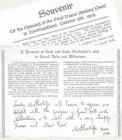 Credits:
Credits:Grand Falls Windsor, A Place and its People, Published by: Grand Falls-Windsor Heritage Society Inc. 2005